| INFN - Laboratori Nazionali di Frascati, Italy | October 20-29, 2015 |
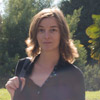
Professor at the Physik Institut of the University of Zurich. Her research interests are in astroparticle physics and cosmology, in particular in the fields of direct dark matter detection and neutrino physics.
web page laura.baudis@physik.uzh.ch
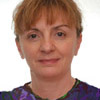
Director of the Laboratory of Synchrotron Light CELLS-ALBA, in Barcelona.
Born in Italy, 1957. Licenciatura en Ciencias Fîsicas in the Universidad Complutense de Madrid (1980) and Degree in Physics summa cum laude at the Università degli Studi di Napoli (1982).
Since 2012 Director of Alba-CELLS, the 3rd Generation Synchrotron Radiation Facility at Barcelona, Spain. Has worked at CERN from 1982 to 1985, then at the Laboratori Nazionali di Frascati of INFN from 1985 to 2012, on design, construction and operation of accelerators, participating with key contributions to different projects as DAFNE, CTF3, CNAO.
Member of International Advisory Committees, among which CERN Machine Advisory Committee, ESS Technical Advisory Committee, NSLS-II Advisory Committee, HZB Advisory Committee, Evaluation panel of the 2009 Helmholtz-Programme "Research with Photons, Neutrons and Ions", PSI Advisory Board, XFEL-Machine Advisory Committee.
EPS Fellow, Managing Editor of EPJ Plus for Accelerators and Applications, Experimental Techniques and Data Analysis.
cbiscari@cells.es
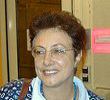
Dr. Silvia Dalla Torre is the Director of the Trieste INFN unit. She has been working in many particle physics experiments at CERN and other international laboratories, holding roles of increasing responsibility. She is an expert of gaseous and particle identification detectors.
Career
2009 – present: Director Sezione INFN di Trieste
2002 – present: Research Director INFN
1990 – 2002: Senior Researcher INFN
1981 – 1990: Researcher INFN
2000: Scientific Associate, CERN
Membership in Scientific Committees
2005 – 2008 Member of Large Hadron Collider Committee (LHCC) at CERN
2003 – 2008 Member of Commissione Scientifica Nazionale I (CSNI) of INFN
2000 – 2003 Member of SPS and PS experiments Committee (SPSC) at CERN
Research activity
1979 – 1983: Nucleon-Nucleon experiment at Saclay-Saturne II
1983 – 1986: PS156 experiment at CERN-LEAR
1985 – 1991: PS201-PS206 experiments at CERN-LEAR
1990 – 1998: NA47 (SMC) experiment at CERN-SPS
1996 – present: NA58 (COMPASS) experiment at CERN-SPS
2008 – present: R&D for MPGD (MicroPattern Gaseous Detector)-based photon detectors
2008 – present: RD51 experiment at CERN
Main research responsibilities
1. Project coordination (design, construction, operation, performance) of detectors of increasing size and complexity:
2. Member of the COMPASS Technical Board (1997-2008).
3. Chairperson of the RD51 Collaboration Board (2008 - present).
4. 2004 – present: Spokesperson of 4 work packages within
Publications
More than 160 articles in international journals with referee
Other activities
silvia.dallatorre@ts.infn.it
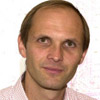
Christophe de La Taille is director of OMEGA microelectronics laboratory at Ecole Polytechnique and CNRS/IN2P3. He has coordinated ATLAS liquid Argon and CALICE electronics. His team has designed and produced many chips for calorimeter and SiPM readout, including PET applications.
taille@in2p3.fr
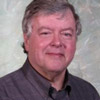
Prior to joining Sigma Space Corporation as Chief Scientist in February 2003, Dr. Degnan accumulated over 38 years of technical, supervisory, and project management experience at NASA's Goddard Space Flight Center where he led the development of advanced lasers and electro-optical sensors.
Prior to joining Sigma Space Corporation as Chief Scientist in February 2003, Dr. Degnan accumulated over 38 years of technical, supervisory, and project management experience at NASA’s Goddard Space Flight Center where he led the development of advanced lasers and electro-optical sensors. Supervisory positions at GSFC included: Head, Advanced Electro-optical Instrument Section (1979-1989), Deputy Manager, NASA Crustal Dynamics Project (1989-1993), and Head, Geoscience Technology Office (1993-2003). His GSFC organizations managed and/or provided direct technical, algorithm and software support to the NASA Satellite Laser Ranging (SLR) and Very Long Baseline Interferometry (VLBI) space geodetic networks, the LAGEOS 2 and TOPEX/Poseidon missions, Mars Orbiter Laser Altimeter (MOLA), Geoscience Laser Altimeter System (GLAS), and Messenger Laser Altimeter (MLA) missions to Mars, Earth, and Mercury respectively. He has authored well over 200 publications (including many invited review papers and book chapters) on lasers and laser instrumentation. From 1989 to 1993, he held the post of Distinguished Adjunct Professor of Physics at The American University in Washington DC where he taught a two semester graduate course in Quantum Electronics. In 1998, he led the creation of the International Laser Ranging Service (ILRS) and served as its first Governing Board Chairperson until his retirement from NASA. Dr. Degnan is a Fellow of the International Association for Geodesy (IAG), a Senior Member of OSA and IEEE, a Charter Member of the International Laser Communications Society, and Sigma Pi Sigma National Physics Honor Society. He is the recipient of numerous awards from NASA (including GSFC’s prestigious Moe I. Schneebaum Memorial Award for Engineering in 1987), academia (including Drexel University’s Alumni Circle of Distinction Award in 2005), and international organizations (including the Tsiolkovsky Medal from the Director of the Russian Space Agency Rosaviacosmos in 2002 and the ILRS SLR Pioneer Award in 2014).
john.degnan@sigmaspace.com
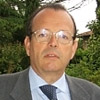
Adjunct Professor of medical physics at the University of Pisa. He has been President of the European Federation of Organization of Medical Physics (EFOMP) from 2004 to 2007.
Alberto Del Guerra received the degree in physics from the University of Pisa in 1968. He has been Full Professor of Physics at the University of Napoli in 1987-1991, and Full Professor of Medical Physics at the University of Ferrara in 1992-1997. Since 1998 he is Full Professor of Medical Physics at the University of Pisa, Head and Director of the Specialty School of Medical Physics, and Head of a research group in Medical Physics (Functional Imaging Instrumentation Group) at the Department of Physics. He is author/co-author of more than 300 publications. He has been President of the European Federation of Organization of Medical Physics (EFOMP) from 2004 to 2007. Since he retired on 1 Nov 2014, he is now adjunct Professor of medical physics at the University of Pisa.
web page alberto.delguerra@df.unipi.it
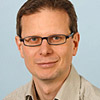
Full Professor of Particle Physics at the Institute for Particle Physics of ETH Zurich. He has been awarded by to ETH Golden Owls (in 2005 and 2009) and by the Credit Suisse Award for best teaching at ETH in 2013.
Prof. G. Dissertori has studied Physics at the University of Innsbruck, Austria. In 1997 he obtained his PhD in Physics (summa cum laude), for a thesis on theoretical studies and experimental data analyses related to the ALEPH experiment at the CERN electron-positron collider LEP. During the following four years he worked at CERN, first as Research Fellow and then as Research Staff scientist. During that time he continued his work on the ALEPH experiment and started his involvement with the CMS detector at the Large Hadron Collider (LHC). In September 2001 he arrived at ETH Zurich as Assistant Professor. Since 2007 he is Full Professor and currently he is the Head of the Institute. During these years at ETH, the main focus of his research group was on the construction, commissioning and operation of the CMS experiment, with particular emphasis on the electromagnetic crystal calorimeter. Furthermore, since the start of data taking late in 2009, his group has played a leading role in the CMS data analysis efforts. Besides his research activities, G. Dissertori pays particular attention to his teaching at ETH, which has already been awarded by two ETH Golden Owls (in 2005 and 2009) and by the Credit Suisse Award for best teaching at ETH in 2013.
web page disserto@ethz.ch
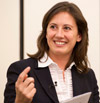
Professor of Experimental Particle Physics at the University of Hamburg. She is member of the European Committee for Future Accelerators (ECFA) since 2014.
Education
1997 Diploma at University of Ferrara (Italy) on LHC magnet design
2003 Promotion (Ph.D.) at University of Amsterdam on "Nuclear effects in semi-inclusive DIS off Kr and other nuclei"
Professional Experience
2003 Postdoc, DESY, Experiment ILC
2006 Young Investigator Group leader (HGF) for the project "R&D studies for new photo-detectors and their integration in HEP detectors"
2007 Research staff, DESY, Experiment ILC
2011 Professor (W2), Hamburg University, Detector development
Further activities (selected)
2006 - 2008 Run Coordinator, CALICE Experiment
2011 - 2015 Work package coordinator of European FP7 grant "EndoTOFPET-US"
2012 - 2015 Member, Marie Curie Initial Training Network, "PicoSec”
2009 - 2012 Member, BMBF ‘Forschungsschwerpunkt’ FSP-102 (Collaboration of the German Institutes working on the CMS Experiment)
2009 - 2012 Project leader of BMBF project: "R&D DETEKTOREN: Fundamentales Verständnis von Silizium Detektoren für geladene Teilchen und Photonen”
2014 - Member, European Committee for Future Accelerators (ECFA)
2015 - Project leader of BMBF Verbundprojekt 05H2015 (Collaboration of the German Institutes working on Detector R&D for the International Linear Collider)
Research activities / experience
Particle Physics, i.e. Silicon defectors, calorimeters, detectors for medical applications
HERMES: nuclear physics, semi-leptonic DIS, silicon detectors
CALICE: hadronic calorimeters, particle flow
EndoTOFPET-US: positron emission tomography, endoscopic detectors for medicine
CMS: silicon detectors
web page erika.garutti@physik.uni-hamburg.de

Professor of Physics at the Yale University. He is the national coordinator for the ALICE-USA Collaboration and Deputy Chair of the ALICE Collaboration Board.
web page john.harris@yale.edu
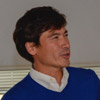
Currently CNRS Senior Scientist (LAL) and CERN Project Associate working in the ATLAS experiment. PhD at LAL Orsay (University of Paris VI Pierre et Marie Curie) on the ALEPH experiment. Fellow at CERN on the ALEPH experiment LBL (Berkeley) on the D0 experiment.
kado@lal.in2p3.fr

Professor of Physics at the Groningen University, he is a renowned nuclear physicist. He is the spokesperson of the NUSTAR collaboration at FAIR.
Education
Worcester Polytechnic Institute
B.Sc. in Physics with high honors, May 1981
B.Sc. in Mathematics with honors, May 1981
Brown University
M.Sc. in Physics, June 1983
Massachusetts Institute of Technology
Ph.D. in Physics, February 1987
Functions
| 1982 - 1983 | Brown University Teaching Assistant in the department of physics |
| Jun. 1983 - Nov. 1986 | Massachusetts Institute of Technology Research Assistant in the Laboratory for Nuclear Science (LNS) and the Department of Physics |
| Nov. 1986 - Feb. 1989 | NIKHEF-K Post-doctoral Research Associate in the electron-scattering group |
| Feb. 1989 - Dec. 1992 | Free University, Amsterdam Staff member (tenured) of the experimental nuclear physics group |
| Jan. 1993 - present | Kernfysisch Versneller Instituut (KVI), University of Groningen Assistant Professor in the Physics department (1993-2000) Associate Professor in the Physics department (2000-2004) Professor in the Physics department (2004-present). |
Professional Services
Main domains of interest
web page n.kalantar-nayestanaki@rug.nl
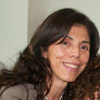
Rosanna Larciprete graduated in Physics at the University of Rome "Sapienza" in 1985. Between 1988 and 2002 she was staff scientist at ENEA - Frascati and her activity concerned the development of laser-based techniques for material processing, with special focus on photochemical processes induced in gas-phase molecules, thin film deposition, interface alloying and recrystallization. Between 1999 and 2001 she was on leave at Elettra-Trieste, where her research was focused on the study of the electronic, chemical and structural properties of surfaces, interfaces and nanostructured systems and on the investigation of surface reactions by means of synchrotron based diagnostics (UPS, XPS, XPD, NEXAFS). In 2002 she moved as senior scientist to CNR, first (2002-2004) at Istituto di Metodologie Inorganiche e Plasmi in Potenza and later (2004-present) at Instituto dei Sistemi Complessi in Rome, where her scientific activity mainly concerns the development of growth processes and the investigation of the physico-chemical properties of bidimensional materials (graphene, H-BN, MoS2) and heterostructures. Since 2010 she is associated with LNF-INFN in the frame of a research project on the study of the secondary emission properties of ultrathin films to be used as passivating coatings to mitigate the multipacting effect in particle accelerators. She is co-author of more than 140 articles in peer-reviewed international journals.
web page rosanna.larciprete@isc.cnr.it

Ken Long is Professor of Experimental Particle Physics at Imperial College London.
Ken Long is Professor of Experimental Particle Physics at Imperial College London. Having studied the hadronic final states produced in deep inelastic muon-proton scattering as a graduate student at Oxford, he went to CERN in 1985 to work on the UA1 experiment. Returning to the UK in 1987, he joined the ZEUS experiment at DESY in Hamburg, contributing to the design and construction of the experiment, the development of the reconstruction and simulation software, the measurement of the structure of both the proton and the photon and making detailed studies of the electroweak interaction.
Fascinated by the mysteries hinted at by the discovery of neutrino oscillations at the turn of the century, he played a leading role in the development of the techniques required to produce intense beams of high-energy neutrinos on an industrial scale at the Neutrino Factory. In this context he chairs the International Design Study for the Neutrino Factory (the IDS-NF), is Spokesman for the international Muon Ionization Cooling Experiment that is under construction at the Rutherford Appleton Laboratory and is chair of the ICFA Neutrino Panel.
web page k.long@imperial.ac.uk
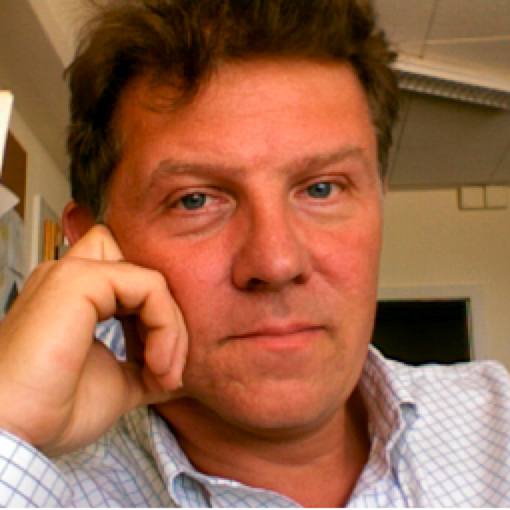
Michelangelo Mangano took the digree in Physics at the Scuola Normale Superiore (PISA) in 1983. He worked at Princeton University ('84-'86), at Fermi National Accelerator Laboratory - FNAL, Chicago ('86-'88) and at INFN of Pisa ('88-'95). Since 1995 he is member of the CERN Theoretical Physics Group.
web page michelangelo.mangano@cern.ch
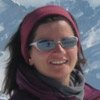
Dr. Francesca Pastore is presently working at CERN for the ATLAS experiment. She has a deep experience in DAQ and trigger systems gained working for many high energy physics experiments all over the world.
I've collected long experience in the operations of large experiments, first in BaBar and then in ATLAS, where I'm currently working. I had a key role in the design, construction and commissioning of the L1 muon trigger system of ATLAS in the Barrel, which uses RPC chambers as dedicated detectors. I am currently involved in the design of a new L1 trigger in ATLAS making use of inner tracking information for the HL-LHC project. I'm also deeply involved in the development of the core infrastructure of the High Level Trigger in ATLAS for current running.
francesca.pastore@cern.ch
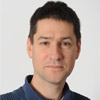
Niko Neufeld is a staff scientist of the physics department at CERN. He is an expert of high-speed data acquisition and embedded processing systems. He is a co-designer of the data acquisition architecture of the LHCb experiment.
Niko Neufeld was born and studied in Austria. He holds a degree in engineering physics from the University of Technology in Vienna Austria and a PhD in particle physics. Since 2000 he has been working in the field of high-speed data acquisition and embedded processing. He has co-designed the data acquisition system of the LHCb experiment, a facility to study the minute differences between matter and anti-matter sifting through almost 70 Gigabytes of data / second. He is now in charge of the upgrade of the LHCb DAQ, which will increase the data-rate by almost a factor 50. Dr. Neufeld has published on numerous topics of high-speed networking, physics data-processing and embedded systems. He is a staff scientist in the physics department at CERN.
niko.neufeld@cern.ch
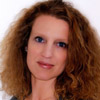
Research Engineer at LAL, joint research unit of Paris Sud University and the Centre National de la Recherche Scientifique (CNRS), she works in the development of Detectors and testing platforms for High Energy Physics. Deputy Head of the SERDI (Electronics, Instrumentation and Detectors Department), she coordinates the Photodetector network of the Institut National de Physique Nucleaire et de Physique des Particules (IN2P3) of the CNRS.
web page puill@lal.in2p3.fr
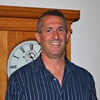
Professor of Accelerator & Beam Dynamics at the UCLA Los Angeles, USA. He is a world renowned expert in the physics of intense, ultra-fast charged particle beams and their interactions.
web page rosenzweig@physics.ucla.edu

Dr. Fabio Sauli is a world expert in gaseous detectors. He worked at CERN from 1969 to 2006 and now he's continuing the activities in the field of applied instrumentation research at the TERA Foundation.
After graduating in 1965 at the University of Trieste (Italy), in 1969 I joined the group of Georges Charpak (1992 Nobel Laureate in Physics) at CERN, the European Organization for Nuclear Research, contributing to the development of the Multiwire Proportional, Drift, Micro-Strip chambers and numerous other detectors. From 1989, Leader of the Gas Detectors research group, I developed novel Micro-Pattern Gas Detectors, inventing in 1977 the Gas Electron Multiplier (GEM), widely used today in many fields: particle physics, astrophysics, medical diagnostics. In 2005 I was awarded the title of Doctor Honoris Causa at the Université de Haute Alsace. After retirement in 2006, I have continued the activities in the field of applied instrumentation research. Within Prof. Ugo Amaldi's TERA foundation, I direct the Advanced Quality Assurance group, aiming at the development of diagnostic tools for patient irradiation monitoring at the hadron therapy centers, and participate to the ENVISION FP-7 European project as leader of the Time of Flight-PET group. Regularly providing general or topical courses on detectors at Universities and Schools, I am the author of hundreds of publications on instrumentation and several books on detectors. Since 2000, I serve as Editor of Nuclear Instruments and Methods in Physics Research.
web page fabio.sauli@cern.ch
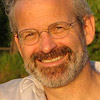
He is Full Professor at the University of Bonn, for which he has been Director of the Institute of Physics, and Head of the Physics and Astronomy Department. He's working for the ATLAS Collaboration for which he has been the Germany Contact Physicist in the period 2005-2009.
1972-1978 Study of Physics
1978-1982 PhD (Photon-Photon Interactions)
1982-1985 Stanford Linear Accelerator Center, Stanford, USA (e+e- collisions)
1985-1989 CERN (Staff Researcher): e+e- collisions LEP
1989-1992 Professor Univ. of Heidelberg: Heavy Ion Physics
since 1992 Full Professor Univ. of Bonn (e+e- and pp collisions)
Large Particle Physics Experiments
TASSO at PETRA (Desy, 1978-82), Mark III at SPEAR (SLAC, 1982-85),
OPAL at LEP (CERN, 1985-2000), NA45 (CERN, 1989-1992), ATLAS at LHC (since 1994),
D0 at TEVATRON (2001-08), Belle II at KEK (since 2008)
Academic duties and charges
Director Institute of Physics Bonn 1993, 1997, 2001, 2009, 2012
Head of Department Physics and Astronomy 2004-2006
Member elect. NRW Academy of Sciences since 2001
Assoc. Editor "Advances in High Energy Physics" until 2012
Editorial Board Member "Progress in Particle and Nuclear Physics" (2008-2014)
Member High Energy Physics Board of the European Physical Society (2004-2012)
Member DPG Stern-Gerlach-Prize Committee (2009-2015)
Spokesperson BMBF Research Focus: FSP 101 "Physics at the TeV scale with ATLAS" (2006-2009)
ATLAS National Contact Physicist for Germany 2005-2009
Spokesperson Bonn-Cologne Graduate School in Physics and Astronomy (2007-2012), winner Excellence Initiative Germany
Teaching Award, Univ. of Bonn (2015)
web page wermes@uni-bonn.de
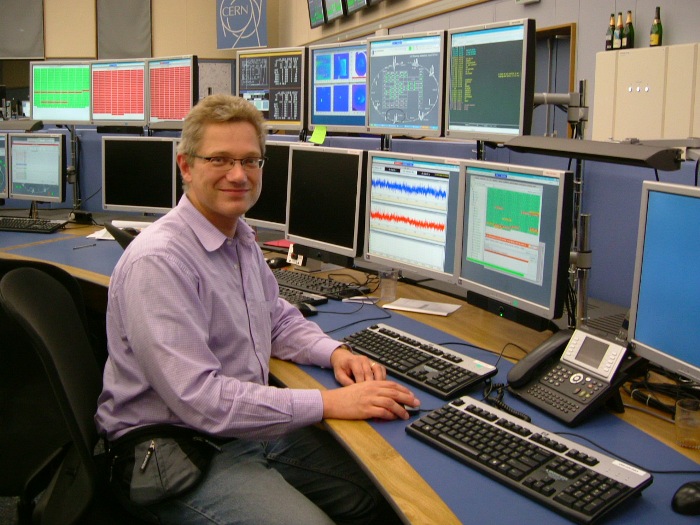
Dr. Frank Zimmermann is a staff member of the CERN Accelerator Physics Group since 1999. He contributed to the design, and now the the operation, of the Large Hadron Collider (LHC), and he is participating to the developments to for a future linear collider (CLIC). He got his expertise in particle accelerators working at HERA in Hamburg and SLAC in Stanford.
web page Frank.Zimmermann@cern.ch
© 2015 INFN-LNF. Webmaster: Sara Reda
